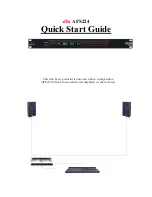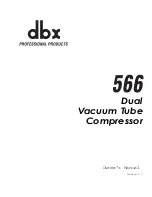
26 / 56
Festo 7DSBCa_en
4
Repair steps
Where possible, it is advisable to dismantle the ISO cylinder from the system entirely before carrying out the repair.
Before starting the repair, dismantle any attachments in accordance with the instructions in the accompanying operating
instructions.
Keep your working environment clean and tidy.
Before dismantling the ISO cylinder the cause of the failure must be investigated to prevent repeated and premature
failure. An ISO cylinder that has been used as intended will not normally exhibit any premature signs of failure.
This investigation is not necessary in the case of non-premature failure (fatigue time). However, the condition of the ISO
cylinder (general condition, etc.) must always be checked.
In case of uncertainty, we recommend replacing all the components mentioned to rule out reciprocal effects during later
operation.
In the event of premature failure of the ISO cylinder, the operating conditions should be examined more closely.
The following possibilities should be considered, among other things:
– Overloading
• In case of overloading, the application parameters (load, speed) should be adjusted accordingly.
– Ambient conditions/material resistance
• Check whether the ambient temperature is within the permissible range.
• Check the chemical and physical ambient conditions for harmful substances, such as dust, abrasive particles,
cooling lubricants, solvents, ozone, radiation, water-soluble substances, greases and oils, etc.
Note
The repair should preferably be carried out on a stable and flat work surface with storage for small parts.
To prevent damage to sealing rims or guide surfaces, do not use pointed or sharp-edged assembly aids.
Note
Damage to the seals when dismantling the ISO cylinder:
• Use and replace all parts included in the set of wearing parts for the repair.
Only use the spare parts and assembly aids (grease, thread locking agent …) provided in the set of wearing parts.
4.1
Preparatory steps
Warning
Pressure in the ISO cylinder can dissipate suddenly on opening the cylinder.
Risk of injuries due to the bearing cap unexpected moving away.
• Before starting the repair, completely depressurise the ISO cylinder and attachments: Remove the non-return
valves and tubing from the cylinder.
4.2
Visual inspection
Check the ISO cylinder for visible damage that could impair its function:
such as warping of the piston rod as well as deposits and scoring.
The complete ISO cylinder must be replaced if the cylinder barrel is significantly damaged.
















































